When it comes to SEO competitor analysis, understanding how to conduct is crucial for outperforming them on search engine results pages. By tracking down and analyzing the keywords your competitors are targeting, you can gain insights into their strategies and find gaps that you can exploit in your own SEO plan.
Recognizing the keywords that are driving traffic to their sites allows you to adjust your content and SEO strategies to compete effectively.
Competitor analysis involves more than just knowing who your main business rivals are; it expands to identifying those competing for visibility in the same online spaces that you are. SEO tools and techniques play a significant part in uncovering this information, offering a clear view of what your competitors are doing right and where there may be opportunities for improvement.
Evaluating this data correctly can lead to more informed decisions and strategies that cater to what your target audience is searching for online. This understanding is critical to refining your SEO approach and ultimately securing a prominent position in search engine rankings.
Key Takeaways
- Analyzing competitors’ keywords reveals their SEO strategies and opportunities for your growth.
- SEO competitor analysis extends beyond business rivals to anyone you compete with for online visibility.
- Proper evaluation of competitor data informs enhanced SEO tactics to boost your search engine ranking.
The Basics of SEO
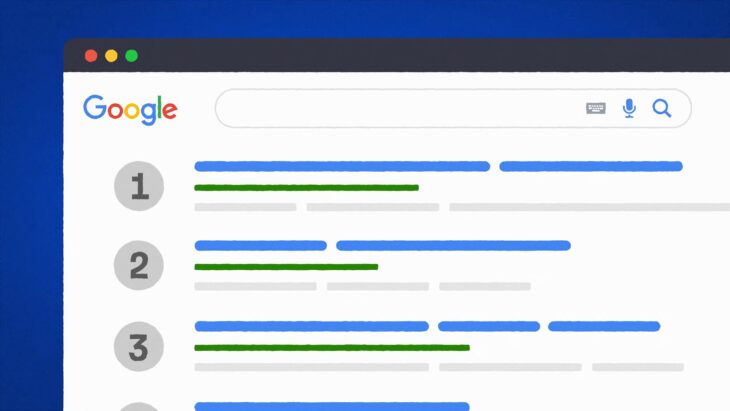
When I approach SEO, I start by recognizing it as the practice of optimizing a website to increase its visibility when people search for products or services related to a business in search engines. The higher a site ranks in search engine results, the more likely it is to attract attention and attract prospective and existing customers to a business.
Search Engine Optimization (SEO) involves various strategies and tactics, but some core components include:
- Keyword Research: Identifying the terms and phrases that potential customers are using to find products or services.
- On-Page SEO: Optimizing individual web pages to rank higher, which involves the title tags, headings, content, and images.
- Off-Page SEO: Building the site’s reputation through backlinks, which are links from other sites to yours.
- Technical SEO: Improving technical aspects to increase ranking, such as site speed, mobile-friendliness, and structured data.
Here’s a simple breakdown:
| Component | Role in SEO |
|---|---|
| Keyword Research | Foundation for targeting what users are searching for |
| On-Page SEO | Page-level optimization for relevance and performance |
| Off-Page SEO | External signals and links pointing to the site |
| Technical SEO | Under-the-hood optimizations for search engine access and indexing |
I ensure to comply with search engines’ guidelines and focus on the user experience, providing high-quality content that fulfills the searcher’s needs. This approach helps in achieving sustainable rankings and driving valuable traffic to my site.
Identifying Your Competitors
To begin identifying my SEO competitors, I start by analyzing the search engine results pages (SERPs) for keywords essential to my business. This process involves:
- Selecting my keywords:
- I choose keywords that are central to my content strategy.
- High-traffic and niche-specific keywords are my top priority.
- Analyzing the SERPs:
- For each keyword, I observe which websites rank on the first page.
- I look for patterns or recurring domains across different keywords.
- Creating a competitor list:
- I compile a list of websites that frequently appear in the top search results.
- I also consider domain authority and page authority as factors.
- Assessing competitor relevance:
- I ensure they are direct competitors offering similar products or services.
- I gauge their online presence by evaluating social signals and user engagement.
- Categorizing competitors:
- I break down my list into primary (direct competition) and secondary (peripheral competition) groups.
- This helps me to prioritize my analysis and resource allocation.
By methodically following these steps, I gather valuable insights into my SEO landscape. I use these insights to inform my own strategy and identify potential opportunities for improvement. Understanding who my competition is on the digital front enables me to create an SEO framework that’s not only reactive but also proactive.
Tools and Techniques for Keyword Analysis
In the realm of SEO, harnessing the best tools and techniques for keyword analysis is fundamental to outperforming competitors. These methods enable me to discover what audiences are searching for and how I can optimize content accordingly.
Using SEO Analysis Tools
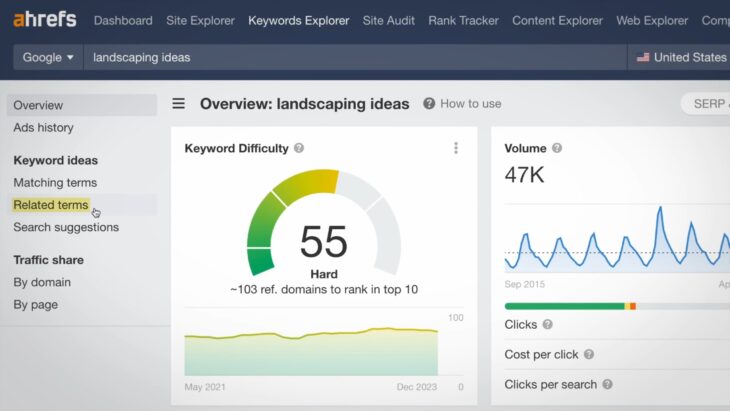
SEO Analysis Tools serve as a cornerstone for uncovering competitors’ keywords. I utilize tools like Ahrefs and SEMrush for a granular level of keyword insight. With such platforms, I can easily pinpoint the search terms driving traffic to competitors’ sites which allows me to assess the relevance and ranking potential for my own strategy.
Notably, I don’t solely rely on one tool; I combine various tools to gain a comprehensive view of the SEO landscape.
Manual Keyword Research Strategies
In addition to automated tools, Manual Keyword Research Strategies are invaluable. I look at competitors’ sites to see what topics they cover. Paying close attention to their titles, headings, and meta descriptions gives me insights into their targeted keywords.
Moreover, I read through their content to identify keyword density and usage patterns. These observations helped me to craft a list of potential keywords that could be leveraged to enhance my SEO efforts.
Analyzing Competitor Keyword Strategies
In my experience, the best way to refine your own SEO efforts is by closely examining how your competitors are succeeding in this space. I’ll guide you through a strategic approach to analyze their keyword strategies.
Benchmarking Against Competitors
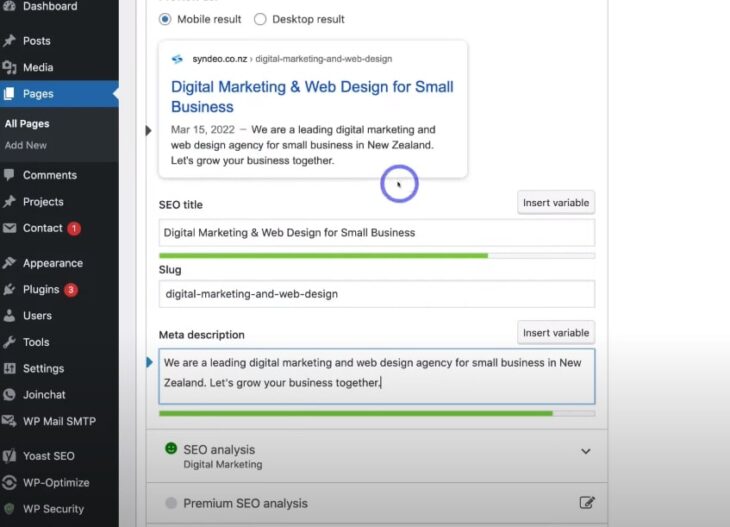
I begin by identifying direct competitors who are scoring the top SERP positions in my niche. Observing their keyword distribution provides me with insights into their SEO priorities and content themes.
For instance, I closely review their on-page optimization approaches, such as title tags, meta descriptions, and header tags, to understand how they are leveraging specific keyword clusters. It’s essential to analyze not just the keywords they rank for, but how they structure their content hierarchy. This can often uncover opportunities they may be missing, which I can capitalize on.
Keyword Gap Analysis
Next, I perform a keyword gap analysis to pinpoint the keywords for which my competitors rank well, but my site does not. I particularly focus on high-value keywords that drive traffic but are not yet saturated with competition. I employ tools like Keyword Competitive Analysis to automate this process.
By systematically charting these gaps, I identify areas for my content development that can potentially yield quick wins and a clearer pathway to improved SERP rankings.
Through a meticulous analysis of competitor keyword strategies, I can craft a more informed and targeted SEO action plan, optimizing my site’s potential to outperform competition in search engine results.
Evaluating Competitor SEO Performance
When I conduct an SEO competitor analysis, my primary goal is to assess how well my competitors are performing in search engine rankings. This involves a systematic approach to pinpoint their most successful keywords and determining how they achieve their ranks.
Keyword Identification:
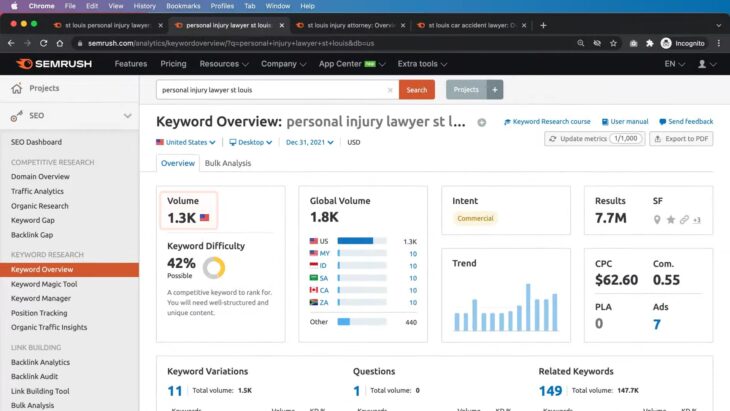
First, I identify which keywords are bringing in traffic for my competitors. Tools like SEMrush’s Organic Research facilitate this process, allowing me to see which terms my competitors rank for and how they perform over time.
- Traffic Estimate: Understanding the estimated amount of traffic each keyword brings is crucial. I prioritize those keywords that provide the most benefit for my competitors.
- Positioning Changes: Tracking how often a competitor gains or loses ranking positions gives insights into their SEO volatility. Monitoring position changes for the top 20 keywords can reveal new opportunities or potential threats.
On-Page SEO Analysis:
A closer examination of my competitors’ top-performing pages is necessary. I analyze elements such as:
- Title tags
- Meta descriptions
- Content quality and keyword density
- Internal and external linking strategies
Performance over Time:
I also assess how my competitors’ rankings have evolved. Have they experienced a recent surge or drop in their SEO performance? This historical data can hint at both successful strategies and areas where they may be losing ground.
By dissecting each aspect of my competitors’ SEO performances methodically, I gain valuable insights, which I can then apply to refine my strategy. The goal is to not only understand what my competitors are doing right but also to spot their weaknesses that I can capitalize on.
Leveraging Insights for SEO Strategy
When I analyze my competitors’ SEO strategies, I focus on extracting valuable insights that can enhance my own SEO efforts. The goal is to understand and adopt the tactics that are working well for them, while maintaining the uniqueness of my strategy.
Keyword Analysis: I begin by identifying the keywords my competitors rank for that I may have missed. Tools like Moz offer templates that facilitate in-depth keyword research. This sheds light on potential keyword opportunities and helps me refine my focus.
Content Evaluation: Next, I look at the types of content that are successful for my competitors. Are they using how-to guides, infographics, or detailed articles? By analyzing the content strategy of my SEO rivals, as suggested by Search Engine Journal, I can determine which formats resonate with our shared audience and adapt accordingly.
Backlink Profile Analysis: A thorough examination of my competitors’ backlink profiles reveals which websites link to them. Services like Backlinko suggest exporting these links for a more expansive study. This insight helps me target similar sources and build my own authoritative backlinks.
Ongoing Monitoring: Finally, SEO isn’t a one-time setup but an ongoing process. I continuously monitor my competitors’ strategies using insights from resources like HubSpot Blog to stay updated on emerging trends and shifts in their tactics.
By systematically employing these methods, I enhance my SEO strategy while ensuring that it remains tailored to my unique brand and goals.
Monitoring Keyword Trends
To stay ahead in the SEO game, it’s crucial for me to keep a keen eye on how competitors are leveraging keywords and seizing market opportunities.
Tracking Positions
My strategy involves a rigorous analysis of where my competitors rank for key terms that we both covet. This not only gives me insight into their SEO strengths but also reveals gaps in my own strategy. By using tools like Similarweb’s competitive monitoring, I can pinpoint the specific keywords and topics my competitors focus on and observe shifts in their positioning. A table format helps me clearly evaluate the rankings:
| Keyword | My Rank | Competitor Rank |
|---|---|---|
| Organic Skincare | 3 | 1 |
| Vegan Face Cream | 10 | 4 |
| All-Natural Moisturizer | 8 | 2 |
Adapting to Changes
When I detect changes in competitor keyword strategies, my response must be swift and strategic. It’s not just about matching their efforts but finding opportunities where I can outperform them. For instance, if I notice a competitor is climbing in rankings for “Eco-Friendly Makeup,” I’ll deepen my content and enhance my page optimization for similar key phrases. I closely analyze reports from tools like Ahrefs’ keyword competitive analysis to transform these findings into actionable SEO tactics. I focus on:
- Expanding my keyword list with alternatives and variations
- Improving on-page optimization for underperforming content
- Creating richer content that better addresses user queries
Content Strategies to Outrank Competitors
In my experience, two pivotal content strategies can substantially increase your chances of outranking competitors: a meticulous Content Gap Analysis and the creation of Superior Content.
Content Gap Analysis
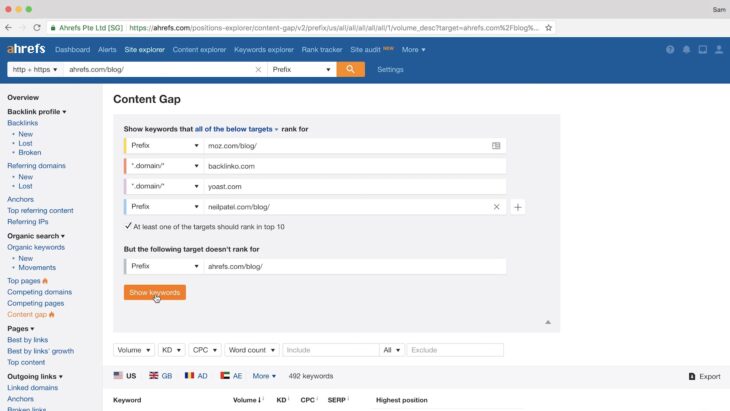
I begin by identifying topics and keywords that competitors rank for, but my sites do not. This process, known as a Content Gap Analysis, helps me understand where I might be missing out on valuable search engine visibility. I use SEO tools to find these gaps and prioritize them based on their potential traffic and relevance to my audience.
Steps I take during a Content Gap Analysis:
- List my primary competitors: I identify who is consistently outranking me.
- Utilize SEO tools: Tools like Semrush or Ahrefs help me extract their top-performing keywords.
- Analyze and categorize: I group these keywords by topics, intent, and search volume.
- Prioritize: I focus on gaps with the highest potential return, considering factors like search volume and business relevance.
Creating Superior Content
My next move is crafting content that is demonstrably better than what’s currently ranking. Superior content can mean more comprehensive information, easier readability, better user experience, or more engaging presentation. My aim is to ensure that not only does my content provide direct answers to user queries but also adds unique value that sets it apart.
Aspects I focus on to create superior content:
- Quality and Depth: I make sure the content is well-researched, detailed, and accurate.
- Readability: Short paragraphs, bullet points, and subheadings make my content easy to read.
- Multimedia Elements: Including images, videos, and infographics can increase engagement.
- Fresh Perspective: I incorporate unique insights or data that competitors lack.
By filling in the content gaps and elevating my content’s quality, I set a strong foundation to rise above my competitors in search rankings.
Frequently Asked Questions
How can I identify the keywords my competitors are targeting?
Identifying the keywords your competitors target involves examining their website content and metadata. Tools like Moz’s Keyword Explorer can provide insights into the keywords they rank for and help you understand the competitive landscape.
What techniques are used for analyzing competitors’ SEO strategies?
Analyzing a competitor’s SEO strategy typically includes reviewing their on-page optimization, backlink profile, and content strategy. I look at factors like keyword density, site structure, and page performance to get a complete picture of their approach.
Which tools can I use to conduct a competitor keyword analysis for free?
There are multiple tools that I use to perform a free competitor keyword analysis, such as Google Keyword Planner and Ubersuggest. These tools offer valuable data on keywords, including search volume and competition levels.
How does keyword competitor analysis benefit my own SEO efforts?
By undertaking a keyword competitor analysis, I discover opportunities where my website can improve its rankings. It also helps me to find gaps in the market, allowing my content to fill those spaces and potentially rank better.
What steps should I take to effectively track and analyze my SEO competition?
To track and analyze my SEO competition effectively, I start by identifying who my competitors are. Then, I use tools like SimilarWeb’s SEO analysis to benchmark my website against theirs, focusing on keywords, traffic sources, and rankings, followed by setting up alerts for any changes in their SEO strategy.
Is it possible to assess the effectiveness of a competitor’s keywords without paid tools?
Yes, it’s possible to assess the effectiveness of a competitor’s keywords without paid tools. Simple techniques like manual search engine queries and analyzing their SERP snippets can reveal a lot about which keywords are driving traffic to their site. Free tools like Google Trends can offer insights as well.
Final Words
By leveraging these insights, you can refine your SEO strategy, create superior content, and monitor keyword trends to outperform your competitors and secure a prominent position in search engine rankings. Keeping a close eye on your competition and continuously adapting your SEO efforts is crucial for long-term success in the ever-evolving digital landscape.


